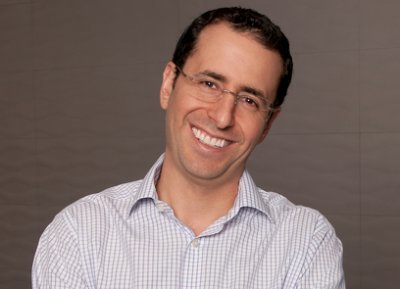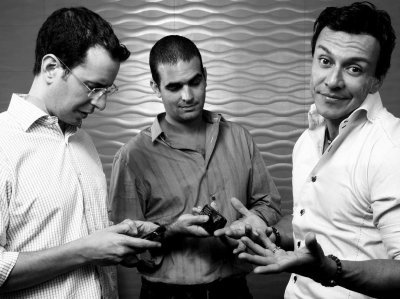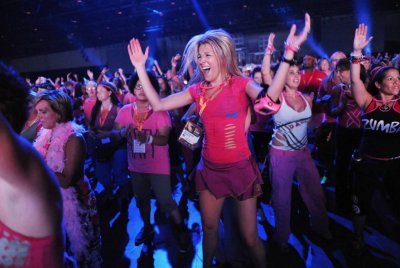
- Australia's largest state hits record-high COVID-19 cases despite weeks of strict lockdown. 'It's a tinderbox ready to explode,' one official said.
- eToro says crypto made up 73% of trading commissions in the last quarter, as retail customers dived in
- A flight attendant says she was too exhausted to report a passenger who shoved her when a flight was overbooked: report
- US jobless claims climb for first time in 5 weeks, to 353,000
WHEN YOU THINK about Zumba, you imagine people wearing brightly coloured cargo pants and pumping their fists.
You think about the dance fitness craze.
But Zumba isn’t just about fitness — it’s an entire franchise that turns dance instructors into entrepreneurs selling apparel and CDs.
A decade ago, Alberto Perlman decided to launch Zumba so that he could sell the classes as VHS tapes on late night infomercials.
In 2012, Zumba was named ”Company of the Year,” by Inc.com and is currently the largest fitness brand in the world.
It all started when an aerobics instructor forgot his music at home…
In 1986, Alberto “Beto” Perez was teaching an aerobics class and forgot his music at home. He had to use whatever he had, which happened to be a fun dance mix incorporating a variety of dance moves, including hip-hop, salsa, martial arts and even Bollywood style.
It was a huge hit with his students.
In 2001, he moved from Colombia to the United States and continued to teach.
In 2001, soon-to-be Zumba founder Alberto Perlman heard about Beto’s classes from his mother.
Alberto Perlman, Zumba chief executive.
“I go to my mom’s house for dinner and she was talking about her dancing class,” Perlman told us. “She said it was the only thing she’d ever done that didn’t feel like exercising.”
Perlman became intrigued when his mother told him that the instructor had a way of integrating “the Saturday night feel” into an exercise class.
After his visit to the class, 25-year-old Perlman was convinced he needed to “take this to more people.”
When Perlman visited his first Zumba class, it wasn’t called Zumba yet and there were “120 people packed in like sardines,” he told Leigh Buchanan at Inc.com.
The 25-year-old Perlman thought that he and his childhood friend Alberto Aghion could start a company that provided infomercials and that Zumba could be their first featured product.
“We never thought it was going to become what it did become,” Perlman said.
From left to right: Alberto Perlman (CEO), Alberto Aghion (COO) and Beto Perez (CCO)
The founders knew Zumba was going to be big when they kept getting phone calls in the middle of the night.
So Perlman and Aghion teamed up with Perez to create a demo tape and license the brand to sell on infomercials.
Perlman told us it wasn’t long before people from all over the country started calling the call center — which mostly went directly to Aghion’s cell phone at the time — to inquire about getting more involved with Zumba.
And they didn’t just want the tapes — they wanted to go to a class or become an instructor.
“[Aghion] called me the next day and said ‘There might be a bigger business here.’”
Perlman, Aghion and Perez decided to turn every instructor into an entrepreneur.
Given the popularity of their line of taped Zumba workouts, they decided to create a training course called the “Zumba Academy” in Miami in 2003.
“We thought 20 people would show up,” Perlman told us. “We got 150 people.” Within two years, Zumba Academy had trained around 700 new instructors — and turned them into entrepreneurs.
Once certified, the instructors could teach their own classes, sell Zumba attire and CDs to their students.
“Well, we thought these people needed some sort of career, so for $30 per month, they could get their career in a box.”
Zumba is different than any other fitness program because most people don’t take it for the fitness benefits.
“It’s the only real fitness program where most people taking it are not taking it for the fitness benefits,” Perlman said. “They’re taking it for the happiness and joy that they feel while they’re doing it, and the fitness is just a result of this.”
“We know so many people who have gone off their depression medications because of Zumba,” he said. “A person that is depressed and on Prozac…this is one hour when they’re not on their meds. If you have breast cancer, it’s one hour when you don’t remember that you have it.”
According to Perlman, participants are burning around 750 calories in a class.
Zumba clothing has become a statement that says “I don’t have to hide like everyone else.”
“Clothing is a big thing for us,” Perlman told us. “The demand is unstoppable.”
Unlike the typical dark-colored yoga gear, Zumba apparel is made up of brightly-colored and patterned clothing.
“Everyone is wearing black yoga pants and then you see the Zumba people wearing colorful, cool cargo pants,” he said. “It makes a statement that says ‘I don’t have to hide like everyone else. I can show a little bit of brightness, and not have to wear these black pants.”
The company sells more than 3.5 million units of clothing through their site.
The founders believe there’s a big business in music.
The core energy of Zumba classes is made up of upbeat music and when the company launched its most recent CD in Europe, it went platinum twice.
In you attend a Zumba fitness concert on Sunday mornings, there are singers on stage and instructors teaching you how to dance to the beat.
“Music is a big part of our business,” Perlman said. “We have musicians come to us and record labels wanting to work with us now. It wasn’t always like that.”
Zumba instructors receive new CDs and DVDs for their classes every month.
Zumba is trying to win over kids as well.
There’s a huge child obesity epidemic in America and Zumba is trying to become part of the solution, Perlman told us.
“Kids don’t want to run — they want to do something that’s fun,” he said. “Some kids want to do sports, but the ones that are bad at it, they don’t want to do it, so we want to create something fun for them.”
“We believe there’s a big future for us in kids,” Perlman told us.
Perlman expects Zumba to reach 25 million students within the next few years.
Right now, 14 million people take Zumba classes every week in 150 countries and at 140,000 locations. But Zumba isn’t stopping any time soon. Perlman wants to reach 25 million students within the next few years.
- Vivian Gang






